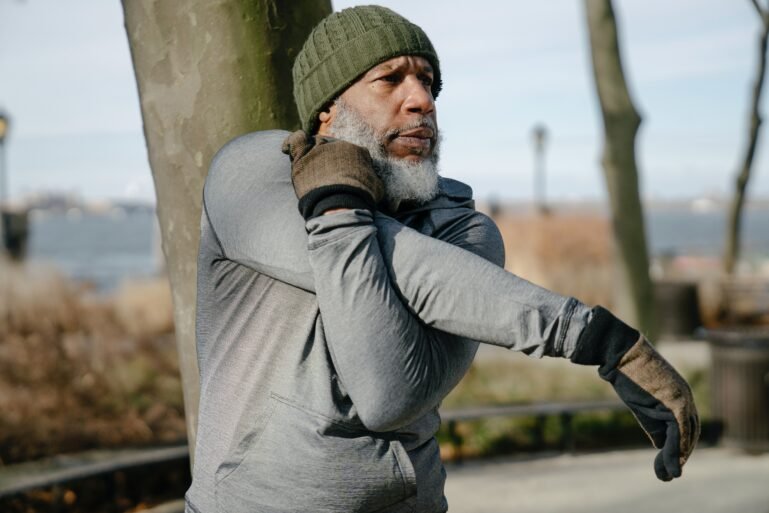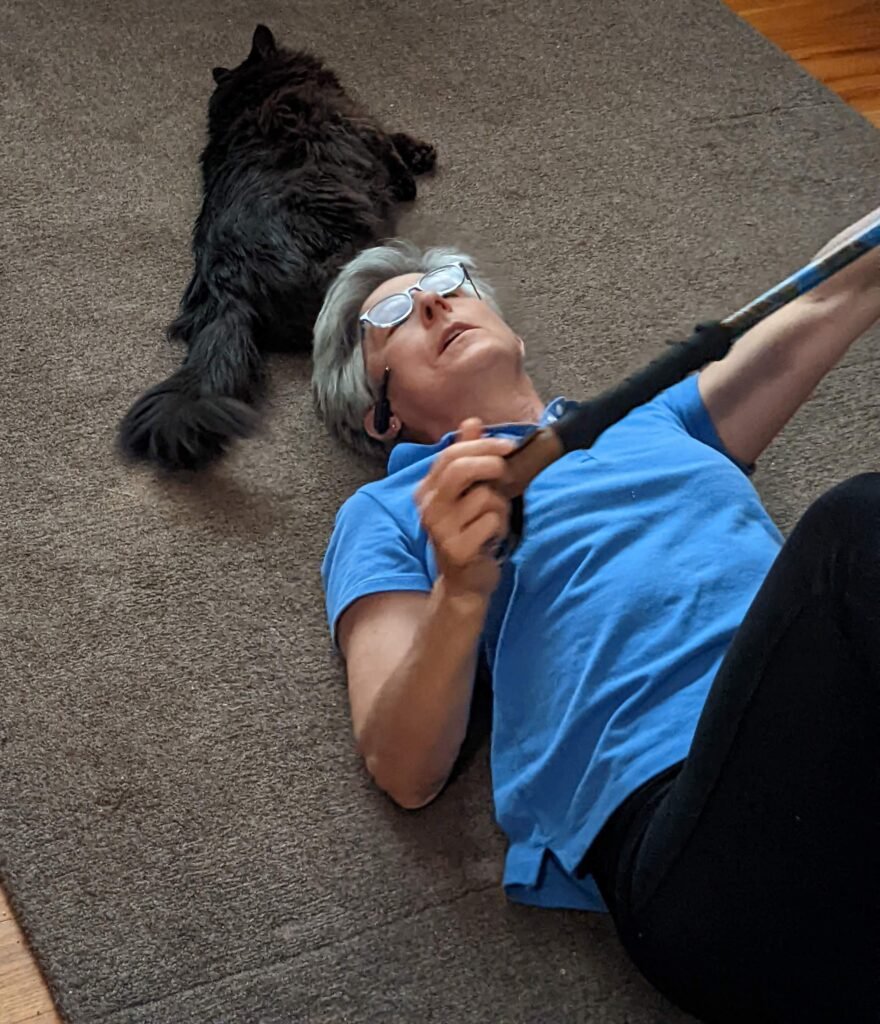Fitness Tech

Fitness encompasses many aspects of overall health and well-being. When we say “fitness,” we commonly think of our physical health exclusively. However, we are learning what some cultures have long known: the mind and body are connected and affect one another in ways we still don’t fully comprehend.
As our bodies age, our metabolism changes, and we witness other changes inside and out. For older adults, fitness can include:
- Maintaining strength
- Posture, balance, and movement
- Mental wellness
- Sleep quality
- Diet
- Hydration
A wide variety of fitness technologies are available – from wearables to help you track health metrics and systems for connected, interactive workouts with coaches, trainers, and other people worldwide, such as Zoom, SoulCycle, Peloton, and others. This post focuses on wearables, apps, and some relatively low-tech solutions to help older adults maintain their overall fitness, well-being, and independence.

LeeAnn Langdon is a personal trainer and the owner of Prime of Life Fitness (Prime of Life Tech’s sister company). LeeAnn specializes in working with persons over 50. Her clients are recovering from injuries, orthopedic surgery, managing balance issues, strength training, staving off diabetes, and generally working to stay healthy.
Langdon says, “Older adults have very different fitness needs. Younger people typically want to lose weight. Older adults want to maintain strength, flexibility, mobility, and independence.”

Let’s examine some of the available technology designed to help older adults maintain health and fitness.
Wearables
Wearables enable their users to track a variety of daily activity and health metrics, such as:
- Time spent standing
- Time spent moving
- Step count
- Flights of stairs climbed or elevation gain
- Heart rate
- Blood oxygen level
- Calories burned
- Sleep quality
- Exercise tracking, such as running, cycling, or swimming

Form Factor
The form is one consideration when selecting a wearable. Fitness trackers come in the following types of configurations:
- Smartwatch with fitness tracking (Apple Watch, Samsung Galaxy Watch, Garmin, Amazfit)
- Wristband (Fitbit, Amazfit)
- Clip-on (Fitbit, Garmin)
- Ring (Oura, Motiv)

Technical Features
You may also want certain technical features on your wearable, many of which are standard on specific devices:
- Companion smartphone app
- Step counter
- Heart rate monitor
- Exercise tracking
- Sleep tracking
- Notifications from your smartphone
- Answer incoming calls
- View incoming text messages
- Fall detection and alerting
- Inactivity alerts
Langdon suggests asking yourself why you want a wearable. There are some good reasons for getting one. You need the fitness data these devices collect to help you and your doctor make better healthcare decisions. You, your doctor, or your family have concerns about falling. Your sleep quality is suffering, and you’re trying to remedy that. All good reasons to consider a wearable.

Sleep tracking, Langdon notes, is helpful for weight loss, managing fatigue, and recovering from workouts. There is also more recent research correlating sleep quality with brain health.
Older adults have very different fitness needs. Younger people typically want to lose weight. Older adults want to maintain strength, flexibility, mobility, and independence.
LeeAnn Langdon, Personal Trainer
Fitness Apps
Numerous fitness apps are available in addition to the smartphone app that accompanies a wearable. Many fitness apps don’t require wearables or sensors to track your activity. Most are free, but some require a subscription or one-time purchase. Some may display ads. We’ve divided the following recommended apps into functional categories.
Food/Diet Tracking

Walking/Biking Tracking
Guided Workout Generators
Wellness
- Plant Nanny – hydration and diminished thirst detection
- SnoreLab – sleep tracking, recordings, snoring treatment options, observe how your body responds to treatment

Meditation
- Ten Percent Happier
- Calm
- Headspace
- Insight Timer
- Kaiser Permanente free recorded meditations
Low Tech Options
Finally, you can use apps that don’t require any special exercise equipment or wearables to help you reach your fitness goals.
HIIT Timer
A high-intensity interval training (HIIT) timer is a simple app that counts down a specified number of minutes and seconds used for interval training.
Smartphone Photos and Videos
You can use your smartphone camera app to take photos and videos of yourself or a workout partner to gain awareness of posture, gait, or movement issues to help guide your fitness and training program.
Audiobooks and Streaming Content
Audiobooks and streaming are great distractions while riding a stationary bike or walking on a treadmill. We suggest using wireless headphones or earbuds for maximum freedom of movement and avoiding getting tangled in headphone cables.
Utilizing technology, you can augment your fitness and workout routines by collecting insightful metrics on your activity, sleep quality, exercise, and calories burned. Safety features like fall and heart irregularity detection are also helpful features to consider.
LeeAnn Langdon is a personal trainer and owner of Prime of Life Fitness. To learn more about her services, visit primeoflifefitness.com, email llangdon@primeoflifefitness.com, or call (720) 295-0150.
Copyright © 2022 – Prime of Life Tech